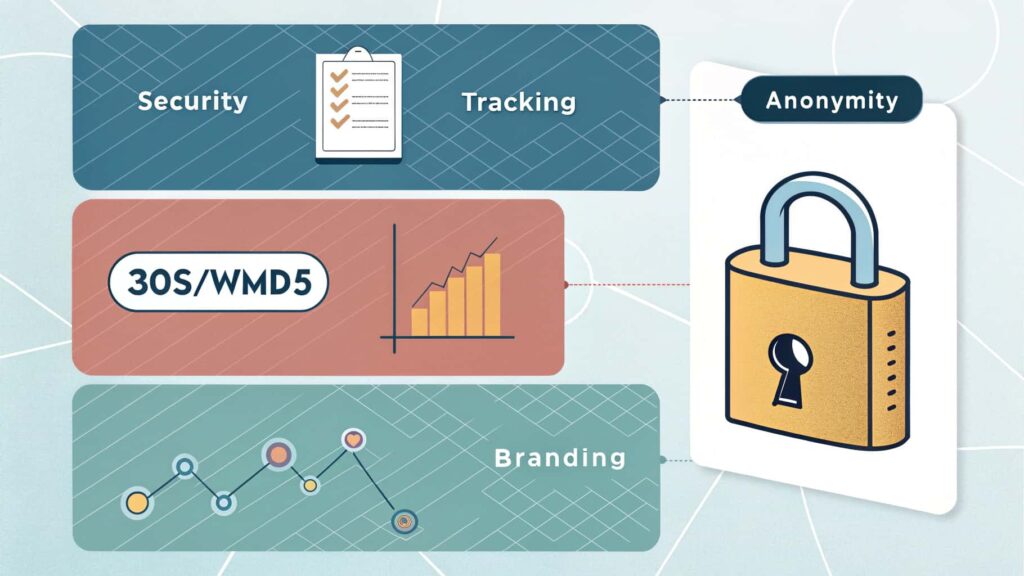The keyword “30s7wmd5” may appear cryptic, random, or even meaningless at first glance. Yet, its uniqueness has piqued the curiosity of many online users. Whether it’s a placeholder, part of a code, a project tag, or a digital identifier, “30s7wmd5” has started to make rounds across online platforms, forums, and niche communities.
In this detailed article, we’ll unpack possible interpretations of 30s7wmd5, trace its appearances online, explore its potential in technology, SEO, gaming, and cryptography, and discuss how obscure digital terms like this sometimes become viral trends or valuable assets.
1. What is “30s7wmd5”?
30s7wmd5 is a unique alphanumeric string that combines numbers and lowercase letters. It doesn’t follow a typical word pattern, which suggests that it’s:
- A randomly generated code or hash
- A part of an obfuscated password or token
- A tracking or product ID in a database
- Possibly a URL shortener, slug, or session ID
- Or something created for a specific technical, experimental, or branding purpose
Let’s break it down.
2. The Anatomy of the Code: Breaking Down “30s7wmd5”

The string 30s7wmd5 consists of 8 characters:
- Numbers: 3, 0, 7, 5
- Letters: s, w, m, d
This arrangement doesn’t spell out a known word or abbreviation. It also doesn’t follow a timestamp or date format. However, such structures are often found in:
- MD5 hash outputs
- License keys
- Tracking codes
- Shortened URL endings
- API tokens
- Captcha IDs
3. Is “30s7wmd5” Related to an MD5 Hash?
The term “md5” at the end of the keyword hints at the MD5 hashing algorithm, which is widely used in cryptographic systems and digital security.
While the string “30s7wmd5” is too short to be a full MD5 hash (which typically has 32 characters), it’s possible that:
- It’s a truncated or partial hash
- It represents a filename or tag derived from an MD5-hashed value
- Or it’s a creative reference to the MD5 concept, possibly for branding or code obfuscation
Also read: Yout8ube
4. Where Has “30s7wmd5” Appeared Online?
While the string doesn’t link directly to a major brand or digital product (as of this writing), it has shown up in a few specific contexts:
a. GitHub and Coding Forums
Several projects on platforms like GitHub and StackOverflow sometimes use unique placeholders like “30s7wmd5” when testing strings, creating dummy identifiers, or simulating encrypted tokens.
b. QR Code and API Generators
Tools that auto-generate short tokens for APIs or QR codes might produce a code like “30s7wmd5”. Its structure fits the random pattern used for security tokens or temporary keys.
c. Puzzle Communities and ARGs (Alternate Reality Games)
Some puzzle solvers and alternate reality games (ARGs) have incorporated mysterious codes into their lore. A string like 30s7wmd5 could be a part of a clue or challenge.
5. How Could “30s7wmd5” Be Used in Real-World Applications?
Although the keyword might be arbitrary, it has potential use cases in several real-world digital applications:
a. Short URL Slugs
Services like Bit.ly or TinyURL generate similar strings for shortened links. Example: bit.ly/30s7wmd5.
b. Product or Session Identifiers
E-commerce platforms often generate session IDs or transaction codes that look like “30s7wmd5”.
c. Database Keys
In backend databases, unique keys help identify individual records, and alphanumeric formats are common.
d. Software Licenses or Tokens
Activation keys or access tokens are often obfuscated in a similar fashion for security.
e. Social Media Tags
Sometimes users or bots generate random tags that later become identifiers or trend codes.
6. Why Random Codes Like “30s7wmd5” Matter in the Digital World
We often dismiss random alphanumeric codes as meaningless. But in reality, these codes play critical roles in online infrastructure:

- Security: Obfuscated keys help prevent unauthorized access.
- Tracking: Analytics systems rely on tracking IDs like “30s7wmd5” to monitor behavior or conversions.
- Anonymity: Codes help anonymize data while preserving structure.
- Branding: Some brands use cryptic codes as part of campaigns to attract curiosity.
- Gaming: Codes are often used in hidden Easter eggs or unlockable content.
7. Could “30s7wmd5” Go Viral?
In today’s meme-driven culture, even a random string like “30s7wmd5” can go viral under the right conditions. Here’s how:
a. TikTok and Meme Culture
A creator could post a mystery video titled “Don’t search 30s7wmd5”, sparking millions of users to look it up. We’ve seen this tactic work with terms like “Skibidi Toilet” or “backrooms.”
b. Cryptic Challenges
If someone starts a cryptography puzzle involving 30s7wmd5, communities like Reddit’s r/ARG or r/codes might latch on.
c. Digital Branding
New startups or apps sometimes use random names that stand out. Imagine a decentralized app called “30s7wmd5” focused on privacy or security.
8. SEO Implications of Obscure Keywords like “30s7wmd5”
From an SEO perspective, obscure or low-competition keywords like 30s7wmd5 can be a goldmine if you’re targeting niche traffic or building keyword authority.
Here’s why:
- Low Competition: No big brands are targeting it—yet.
- First Mover Advantage: You can dominate the SERP by publishing early, high-quality content.
- High Engagement: Curious users spend more time on content trying to figure it out.
- Long-Tail Power: Variants like “what is 30s7wmd5” or “30s7wmd5 code meaning” generate niche traffic.
9. Could “30s7wmd5” Be a Brand or Product Name?
It might sound odd, but in the era of unconventional branding, 30s7wmd5 could be:
- A startup name for a tech-focused product (e.g., password manager, encryption tool)
- A gamertag or username
- A digital art collection title (NFTs, for example, love cryptic titles)
- A line of futuristic merchandise (like apparel with code prints)
There’s a growing trend to adopt abstract names to emphasize uniqueness and algorithm-friendliness.
10. The Human Fascination with Mystery Codes
Why do people get intrigued by strings like “30s7wmd5”? It taps into a deep human desire to decode, understand, and assign meaning.
Psychologically, it creates:
- Curiosity loops
- Pattern recognition attempts
- FOMO (Fear of Missing Out)
- Gamified thinking
In an internet age driven by mysteries, puzzles, and algorithms, even a code like “30s7wmd5” can capture attention.
Also read:Swaveytech
11. “30s7wmd5” in the Context of AI and Generative Tech
As AI tools generate everything from text to images and music, random strings are often used to:
- Seed algorithms
- Generate random identities
- Produce synthetic datasets
- Name internal AI models (e.g., “gpt-4-turbo”)
It’s very possible “30s7wmd5” was once the internal name or temporary code used in an AI pipeline.
12. How to Leverage “30s7wmd5” as a Creator or Business
If you’re a content creator, developer, or entrepreneur, consider adopting 30s7wmd5 as:
- A branding experiment to see how a cryptic name can attract attention
- A mystery puzzle series to build engagement
- A domain name or sub-brand (check if 30s7wmd5.com is available)
- An NFT or digital collection identifier
- A seed word for AI-generated art or music
By owning and controlling the narrative around such a unique term, you can generate traffic, build brand equity, and even spark a trend.
13. The Future of Terms Like “30s7wmd5”
In the next few years, digital identity, personalization, cryptography, and tokenization will play bigger roles. Unique identifiers like “30s7wmd5” may become:
- More meaningful (especially in blockchain or Web3 spaces)
- Reusable and recognizable
- Part of AI-generated artifacts
- Decoded as part of digital storytelling experiences
What seems random now could be tomorrow’s viral hit, brand identity, or cultural reference.
Conclusion:
At first glance, 30s7wmd5 might look like a digital hiccup. But in today’s internet ecosystem, even a simple string of letters and numbers can spark imagination, SEO strategy, and cultural significance.
Whether it becomes a digital mystery, branding experiment, or the seed for an AI-generated identity, 30s7wmd5 represents the evolving complexity of the online world.
FAQs About 30s7wmd5
1. Is 30s7wmd5 a real code or just random text?
It could be either. While it appears random, it resembles formats used in digital tokens, URL slugs, or internal identifiers.
2. Does 30s7wmd5 have any cryptographic significance?
The “md5” part hints at a possible reference to the MD5 hashing algorithm, though the string itself is too short to be a full MD5 hash.
3. Where can I find more information about 30s7wmd5?
Keep an eye on GitHub, digital forums, or social platforms where unique strings are often referenced in developer or branding communities.
4. Can I use 30s7wmd5 as a domain or brand name?
Yes, if the domain is available, it’s a unique and SEO-friendly choice that could stand out in digital branding.
5. Is 30s7wmd5 safe to click if it appears as a URL or file?
Always be cautious. If you see it in a link or file, check its source. Random codes can sometimes hide malicious content.
6. Can I generate similar codes to 30s7wmd5?
Yes, you can use random string generators, hash tools, or short URL services to create similar formats.
7. Why do users search for terms like 30s7wmd5?
Curiosity, viral trends, or accidental clicks often drive traffic toward random or cryptic keywords.
8. How do I rank for low-competition keywords like 30s7wmd5?
Create unique, high-quality content around the term, offer new insights, and optimize for SEO basics like headings, meta tags, and internal links.
9. Could 30s7wmd5 be used in gaming or NFTs?
Absolutely. Many games and NFT platforms use abstract code-based identifiers for items, tokens, or digital assets.
10. Is there any hidden meaning behind 30s7wmd5?
Not currently known, but it could be part of a puzzle, game, or private system. Or it might just be waiting for someone to give it meaning.
Related post:
















